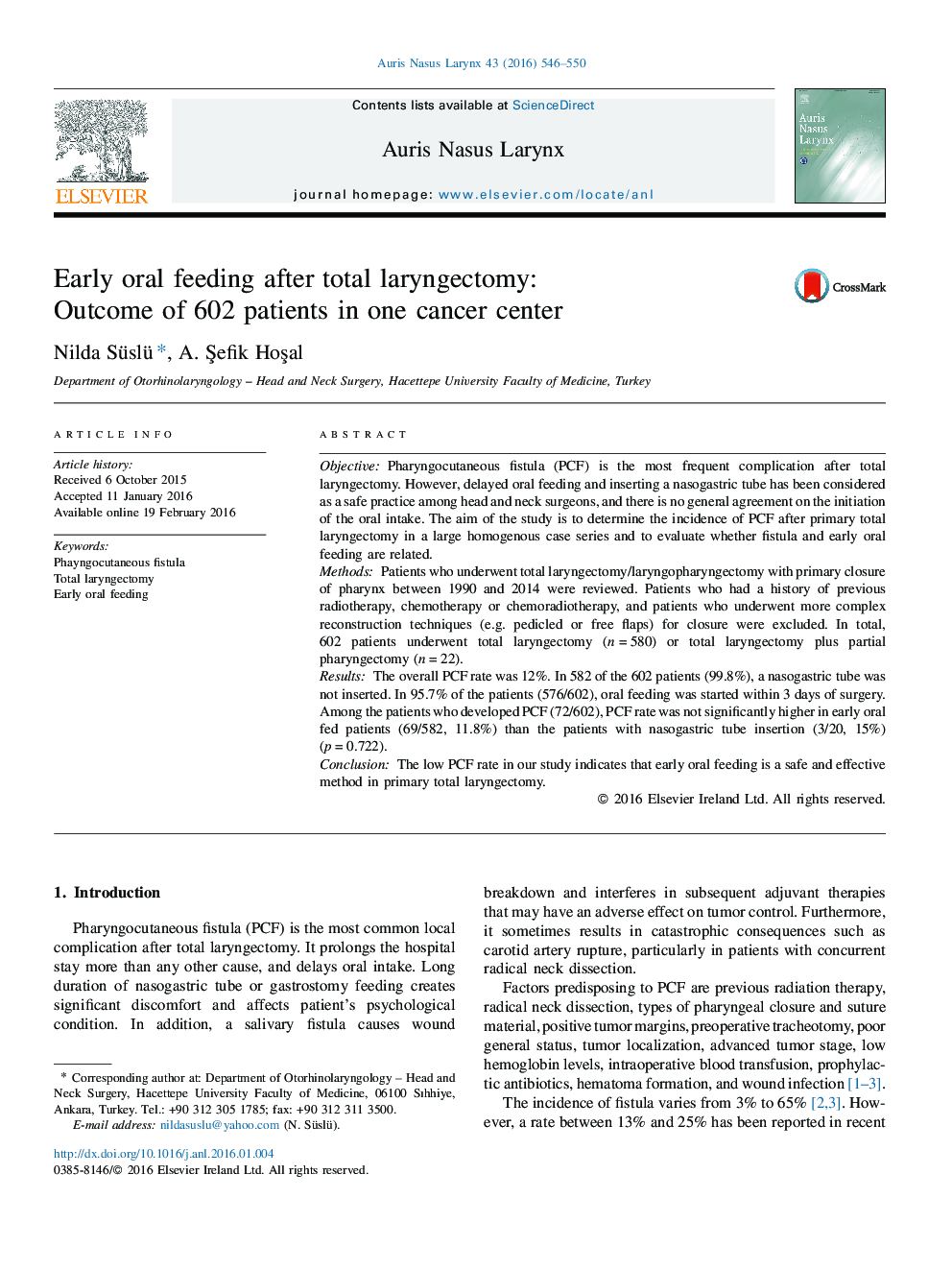| Article ID | Journal | Published Year | Pages | File Type |
|---|---|---|---|---|
| 3459255 | Auris Nasus Larynx | 2016 | 5 Pages |
ObjectivePharyngocutaneous fistula (PCF) is the most frequent complication after total laryngectomy. However, delayed oral feeding and inserting a nasogastric tube has been considered as a safe practice among head and neck surgeons, and there is no general agreement on the initiation of the oral intake. The aim of the study is to determine the incidence of PCF after primary total laryngectomy in a large homogenous case series and to evaluate whether fistula and early oral feeding are related.MethodsPatients who underwent total laryngectomy/laryngopharyngectomy with primary closure of pharynx between 1990 and 2014 were reviewed. Patients who had a history of previous radiotherapy, chemotherapy or chemoradiotherapy, and patients who underwent more complex reconstruction techniques (e.g. pedicled or free flaps) for closure were excluded. In total, 602 patients underwent total laryngectomy (n = 580) or total laryngectomy plus partial pharyngectomy (n = 22).ResultsThe overall PCF rate was 12%. In 582 of the 602 patients (99.8%), a nasogastric tube was not inserted. In 95.7% of the patients (576/602), oral feeding was started within 3 days of surgery. Among the patients who developed PCF (72/602), PCF rate was not significantly higher in early oral fed patients (69/582, 11.8%) than the patients with nasogastric tube insertion (3/20, 15%) (p = 0.722).ConclusionThe low PCF rate in our study indicates that early oral feeding is a safe and effective method in primary total laryngectomy.
